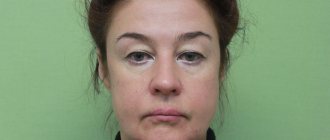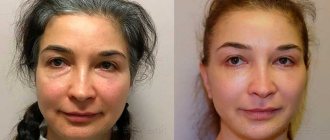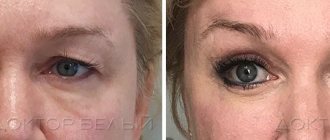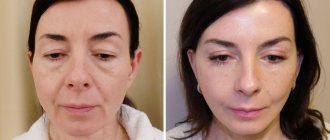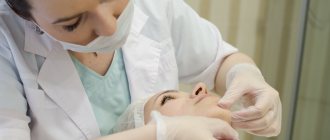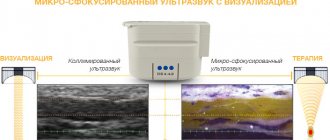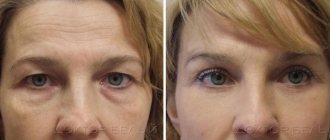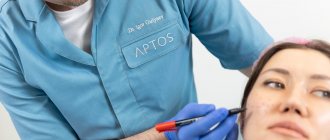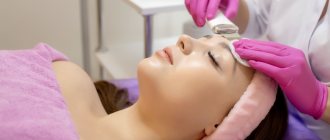Plastic surgery, like any other field of medicine, is constantly evolving. New and more advanced tools and techniques are being created to achieve better results. Endotins are another stage in the development of modern aesthetic medicine. These are small fixation plates for lifting the face and neck area, consisting of polylactic acid (self-absorbable material). They are attached to the soft tissues of the face during the surgical lifting procedure and ensure their strong attachment in the new place.
The use of endotins has expanded the possibilities of anti-aging surgery, increasing the quality of the operation and prolonging the effect for a longer period. The facial fixation plates, measuring only about 2 mm, have sharp teeth on one side, thanks to which the tissues are distributed evenly, and a protrusion on the other end of the endotin ensures a strong attachment to the bone. Endotins are distinguished by their shape and location of their installation.
How do endotins work?
The appearance of endotins solved the problem of tissue overload at the sites of spot sutures, which inevitably arises during facial plastic surgery.
Endotins make it possible to reduce the tension load at the suture site, distributing it over a larger area.
The endotin plates are equipped with sharp spikes - immobilizers, inclined in the direction of the tightening. The process of fixing tissue to endotin is similar to the principle of Velcro. The tissues are securely fixed on the surface of the plate not at one, but at many points at once.
The composition of the polymer material from which endotins are made is not disclosed. It is known that it does not cause rejection and is completely absorbed in the patient’s body within six to nine months. By this time, new connective tissue has grown and the tightened area is securely “fixed” in its new position. This principle is excellent for connecting flat muscle cords cut during surgery and for uniformly distributing tension in the tissue connected to the tension force.
The reverse side of the endotin plate is equipped with special protrusions with which it is attached to the bone. This ensures reliable fixation of the tissues in the new position without excessive tension at the suture point. This allows you to avoid overstretching and tearing of tissue at the attachment site.
Need a consultation?
Benefits of endotin tightening
Reliable fixation and uniform load distribution
Unlike attachment with sutures or screws, where there is only one point of contact, the teeth of the endotin platform contact the tissue at multiple points.
Long lasting effect
The results of lifting with endontin last for 5-10 years due to the strong attachment of the muscle frame in the new position.
Simple and minimally invasive intervention
Access is performed through micropunctures and incisions, the procedure lasts up to 90 minutes, and rehabilitation takes an average of 2 weeks.
Endotins for forehead and eyebrows
For forehead and eyebrow lifting, the ENDOTINE Forehead device has been developed, which is designed to fix the forehead and eyebrow tissue. The teeth located on the main endotin platform are attached to the soft tissue at several points, distributing the tension force over the entire area of the platform. This is very important, because when fixing with screws and sutures, when the tightened soft tissue is fastened at one point, all the tension is concentrated there, so the soft tissue here is stretched or even torn, and the result of the tightening is reduced.
Principles of action and types of endotins
Each endotin is a thin elastic plate with special spikes. They act as immobilizers - they support skin tissue in the required position. According to the principle of operation, they can be compared with the usual Velcro fasteners. Thanks to the large number of teeth, the stress is distributed evenly over the entire area of the plate.
Endotins are fixed using a special protrusion, which is fixed to the bone tissue. This fastening allows you to completely eliminate tissue overstretching in the future, and especially their ruptures.
The final result after the introduction of endotins can be assessed after 3 months. During this time, the soft and hard tissues of the face grow together. Next, endotins are resorbed and excreted from the body naturally. At the same time, the shape and position of the skin remain unchanged - tightened and rejuvenated. Somewhere in the sixth to ninth month after the procedure, new connective fibers are formed, which retain the acquired tightening effect.
As for the types of endotins, four are used today:
- forehead plates;
- eyebrow plates;
- plates for the middle zone;
- plates for the lower zone.
They may differ in a number of parameters: shape, number of cloves, length. The choice depends on where exactly a face or neck lift is needed.
Endotins for lifting the middle third and lower part of the face
Endotins for lifting the middle and lower third of the face are called ribbons (which translates as tapes). Their spines (tines) are distributed along the entire length of the tape. Using access from the lower eyelid from the mucous membrane. With this device you can tighten the tissues of your cheeks upward.
Endotins for tightening nasolabial folds also look like ribbons with spikes, this is exactly the device you see in the picture. From a small incision above the ear, endotin allows the tissue to be pulled up and towards the temples.
An applicator is used to install the ribbon, allowing it to be placed exactly where it should be. The operation looks very simple, but the result is impressive, and the recovery is very fast.
Some endotin tapes are secured simply by sewing, for example those that are used to smooth out nasolabial folds.
How is endotin surgery performed?
General anesthesia is used for pain relief. The surgeon makes small incisions in the affected area and separates the skin and muscle layer layer by layer. Then it tightens and fixes the muscle frame in the desired position with the help of endotins.
Plates of different shapes can be used for different zones. So, for the lower third of the face, a fixing tape is ideal, with which you can form an even and clear oval of the face. Triangular-shaped endotins are used for eyebrow lifting.
6 months after the operation, endotins are completely absorbed, but leave behind a reliable framework of their own connective tissue, which continues to fix the muscle layer in the desired position.
Tolerability of surgery and benefits of endotins
Surgery using endotin is less traumatic. It can be performed either using endoscopic techniques or in an open manner, while endotin can be combined with the removal of excess skin. The main advantage of the method is that the load in this case falls on durable endotin, and the sutures themselves in the scalp heal faster and easier, and look neater. The multi-point fastening technique is patented as a unique solution to prevent local fabric overload when stitching under tension.
The technology was developed in 2004 and to date more than 400 thousand operations have been performed worldwide.
Resorption of endotins in facial tissues occurs within 6-12 months after surgery. It usually takes only 7-10 days for a person to return to work (this is an unusually short recovery period for this type of surgery).
Bruising and swelling are possible immediately after the installation of endotins, but they subside within a week.
Indications for installation of endotin
- ptosis of soft tissues of the face;
- the appearance of pronounced nasolabial folds and “jowls”;
- formation of a double chin;
- loss of volume in the midface area;
- fuzzy oval of the lower jaw.
The procedure for installing clamps can be carried out both as an independent technique and during complex surgical rejuvenation of the face and neck area. Endotins are installed through tiny incisions, making the procedure relatively non-traumatic.
It is possible to tighten the oval of the face without surgery
There should be no complications during endoscopy and rehabilitation. Hematomas occur in fairly rare cases. Working with an endoscope requires extreme caution. If the nerve endings are damaged, serious problems can occur.
In general, this method meets all possible expectations of patients who decide to tighten their facial contours without surgery. For those who want to look completely healthy and young, it is worth considering it. After all, this is the only chance to regain a fresh and cheerful appearance, to change your outlook on life. In addition, the method is very safe; there are no visible traces left after the operation, which means there is nothing to fear. Endoscopy is used not only in facelift operations, but also in neck and abdominoplasty operations.
0
It’s worth starting with an explanation of what endotins are and what they are needed for.
During endoscopic surgery, we peel away and move tissue and skin to a new position. In order for this mass to remain in a new place and, accordingly, the result of the operation, these tissues must be secured. They need to be secured for a certain time so that scarring occurs at the place of fastening, which will keep the tissue in a new position in the future. Endotins are biodegradable structures that secure tissue and dissolve within 6 (according to experience, up to 10 months) after their installation.
Previously, before endotins were invented, we secured displaced tissues in two ways: screws or threads. Personally, I refused to attach with threads (meaning eyebrow lifting operations) for several reasons: firstly, the skin ridge that collected in the detachment zone (up to 5 cm deep from the edge of the hair) did not suit my patients, and, secondly, the result was the property goes away quite quickly (again, due to a relatively small detachment), i.e. the patient's eyebrows drooped to a greater extent.
And therefore, we more often began to secure tissues with the help of screws, which must be removed, on average, on the 14th or 21st day after surgery. Yes, the detachment zone when fixing tissues with screws increased almost to the occipital region, but in this way a larger scar was formed, which more reliably fixed the tissues.
After the surgeon removes the screws, the following factors are responsible for the result of the operation: the patient’s body, or rather the rate of scarring (i.e., did the internal scar have time to form as it should), muscle memory of the tissue, the force of gravity and the body’s ability to resist it. If a scar has not formed, the result (for example, from lifting the forehead and eyebrows) will be more limited. This did not apply to everyone, but similar cases occurred in a certain group of patients for whom endotins are now indicated as fastening methods.
The difference between endotins and all other methods of fastening is that we do not remove them some time after the operation, but they dissolve themselves, allowing us to form the internal scar that we need (i.e. we have guaranteed tissue fixation in new place for 6 months).
for ?
There are several groups of patients:
1.
Patients with severe eyebrow asymmetry
Asymmetry can be either natural or acquired after previous operations. Such patients need to undergo a forehead lift with endotin to fix the new eyebrow position for as long as possible so that muscle memory does not return the eyebrows to their original position. The forehead muscles are very strong and this has happened often in the past.
2.
Men
A difficult category of patients for all surgeons. I know that some surgeons refuse men very often, and I understand why. The fact is that the muscles of men and women are different - in men they are many times stronger, and this works against the surgeon and the patient. Previously, when we performed forehead lifts on men and secured the tissues with screws, we quite often encountered a rapid loss of results, even if the screws were removed on the 20th day and beyond. Unfortunately, we are powerless against the natural characteristics of the body. When we started performing forehead lifts on men using endotins, the difference simply could not be ignored, and now I personally operate on this category of patients only in this way.
3.
Patients with “heavy” eyebrows
The situation here is similar to the previous point. Heavy, massive eyebrows with excess tissue are a direct indication for forehead lifting with endotins.
4.
Patients with previous upper eyelid blepharoplasty.
Everything is simple here: when raising the eyebrows, the supply of upper eyelid tissue decreases. Often, forehead endoscopy has the effect of upper blepharoplasty. And if such an operation was previously performed, then the upper eyelid will not have enough tissue to close the eyelids. Compensatory, the orbicularis oculi muscle will begin to work more actively, the person will begin to frown and blink more often, warning or reacting to dry eyes. As a result, the eyebrows will begin to droop. In this case, endotin will hold the eyebrow in a new position, at a time when there is maximum postoperative swelling and increased protective activity of the orbicularis oculi muscle.
But
if we talk about the middle zone of the face
, then “long” endotins, with the help of which we also carry out lifting of the middle zone through the temporal approach, make it possible to guarantee a symmetrical lift of the above-mentioned tissue area, avoiding such undesirable side effects of thread lifting as temporary partial paresis of the upper lips and possible asymmetry of the zygomatic areas.
Endotins for the lower face
did not take root in our practice, because when performing mixed platysmaplasty simultaneously with SMAS facial lifting, they are simply not needed.
Of course, we can perform operations on all of the above patients without the use of endotins, but I, as I have repeated many times before, am not used to half-measures, and, as a result, to results that last for 2-4 years. In my practice, the use of endotins is an opportunity to obtain a predictable, guaranteed long-term cosmetic result.
I know that many surgeons are against endotins, calling it a waste of the patient's money, a "scam", which is completely inappropriate, but in my opinion. In his work, a surgeon must use a certain number of techniques, and not just one (after all, no one is alike, everyone has a different structure, problems too), and must also be able to adapt to the “working material” and, of course, keep up with the times.
The cost of endotins is high, which significantly increases the cost of the operation, and therefore it is not possible to “make money” from their use. In our clinic, endotins are a way to perform high-quality surgery based on the individual anatomical characteristics of the patient.
To communicate with patients who have undergone facial rejuvenation, come to our forum, section Anti-aging surgeries
Carrying out the operation
The procedure is performed under general anesthesia using special equipment with a miniature camera. The progress of the entire operation can be monitored on the monitor, which guarantees the highest accuracy. Through small incisions, endotins and a camera are inserted under the skin for precise control. The plate is fixed in the desired position, after which the camera is removed and the incision is sutured with a cosmetic suture.
In some cases, the operation also involves removing a small area of skin. If necessary, excision is performed before the installation of endotins. All manipulations are also performed under general anesthesia. But in some cases, even local anesthesia can be used.
In most cases, the patient is sent home almost immediately after the operation. Sometimes, if the intervention was serious, it is necessary to stay in the clinic for 24 hours under the supervision of specialists. The recovery period lasts on average one and a half weeks.
Indications for endoscopy
It is worth noting that endoscopy is not suitable for everyone. It all depends on the condition of the skin, indications, physiological characteristics of the body. A plastic surgeon will determine the need for this procedure. In general, endoscopy can be combined with other facelift methods.
Indications: - uneven oval face; - lip folds; - drooping eyebrows, drooping eyelids; - wrinkles on the forehead.
The reason for treatment may also be the patient’s established incorrect facial expression: sadness, anger, causeless joy. With endoscopic lifting, stitches and scars are invisible, it compares favorably with other methods, as if surgeons managed to tighten the oval of the face without surgery. The endoscope penetrates the skin through small incisions located in inconspicuous places. The skin then peels off and moves to the youth zone, that is, to the position in which it looks smooth and even. The endoscope helps the surgeon navigate the space under the skin, as a result of which all the surgeon’s actions are controlled. Other tissues, such as muscle, are also available to the surgeon. For example, knowing the structure of muscle tissue, the surgeon is able to change the size of the brow folds.
